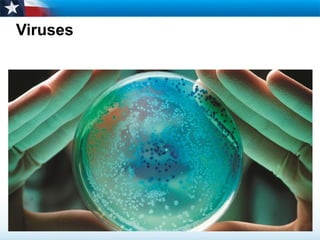Viruses can only reproduce by infecting living cells. There are two main types of viral infections: lytic infections immediately use the host cell to replicate new viruses which then burst out and kill the cell, while lysogenic infections insert viral DNA into the host cell's genome where it remains inactive for many generations before replicating in a lytic cycle. Viruses either replicate immediately through lytic infection or initially persist in an inactive state through lysogenic infection within the host cell before replicating.












